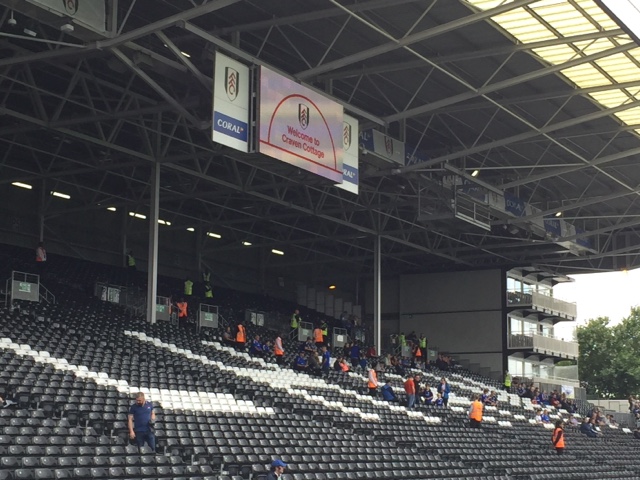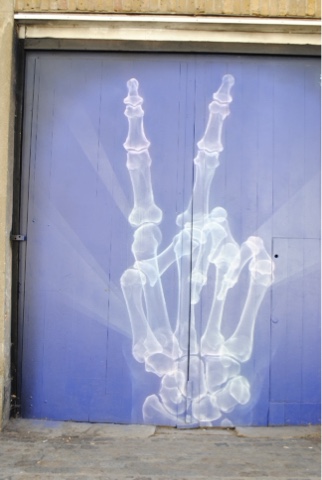I had the privilege of taking a private cooking class with the Indian chef, cookbook author and teacher Monisha Bharadwaj in her home in west London. Normally she teaches groups, but I was the only one signed up for the class. Lucky me!
I thought that London might be the place to learn how to cook Indian food. I really wanted to focus on South Indian cuisine as it has become a favorite of mine. I had not figured out how to make dosa (paper-thin rice crepes) and sambhar (a lentil stew with a homemade sambhar spice blend). Fortunately my teacher catered the class towards my interests.
Just a few miscellaneous tidbits before I go onto describe the dishes we made....
Mangoes- there are Indian and Mexican varieties. In Texas we obviously get Mexican. They are full of pulp. Indian mangoes are sweeter and have less pulp. India does not export their mangoes, so I'd have to go there to try them.
Mango lassi - found in both North and South India. I believe the difference between the two is the proportion of yogurt to water. I think she said 50-50 in South India. Not sure the proportion in the north.
In any case you should make it thin and pourable.
Yogurt used in South Indian cuisine is full milk. Consistency is liquid (unlike our U.S. gelatinous blobs in the grocery store). I may have to make my own yogurt from now on.
Nuts used in cooking are always used raw, not roasted, since you will probably end up roasting them anyway in the pan.
Try to find aged basmati rice. May be marked on package that it is aged. More expensive than "young" rice. Advantage of aged rice is that it does not stick to itself as much.
However for idli any cheap basmati rice will do as you want it to be sticky.
Idli (steamed rice cakes)- no need to use potha thin or parboiled rice, as the recipe I found said. The potha is supposed to make fermentation happen quicker. Two kinds of rice are unnecessary. Just use cheap basmati rice, urad dal, fenugreek seeds and let them ferment.
Dosa (paper-thin rice crepes) are made using the idli batter. The batter should be thick, pourable. I had read you should thin out batter. Did not work when I tried to cook the dosa. Cook in large non-stick frying pan (around 14" in diameter at least). Pour one large spoonful in pre-heated hot, dry pan. Use back of spoon and make circles in batter with each circle getting larger. You should end up with a thin layer circle. Allow to cook until it gets brown and starts pulling away from the pan. Flip and cook on other side if you want to. Not obligatory to flip. Serve warm with chutneys.
Equipment- necessary are a mortar and pestle and/or spice grinder (metal coffee grinder). With the mortar you can grind spices and make pastes. My teacher also had a plastic gadget that looked like a pill crusher. It had plastic teeth inside. You twist the top to make small amounts of paste (like fresh ginger garlic paste). I need to find that gadget.
Many of the seed spices and lentils should be dry roasted in the pan, so that if you grind them later all of their inner moisture is gone. These seeds and lentils include black mustard, fenugreek, cumin, toor dal and urad dal. In some recipes however the black mustard seeds were roasted in oil. That was in instances when you were not going to grind them. When roasting in oil, start with room temperature oil and throw in the mustard seeds. The oil will heat up and the seeds will pop. Then they are ready. Use a neutral vegetable oil when frying and not olive oil (adds flavor when you don't want it).
Cabbage and cauliflower were introduced to Indian cuisine by the British during their reign. They are very commonly used still today.
The dishes we prepared are meant to be easily prepared at home. You may find similar dishes served in South Indian restaurants. We started out making Thayir vada (lentil fritters). These are made with soaked split white urad dal (lentils) and deep fried in vegetable oil. Use enough oil to almost submerge the fritters. Fry them in a deep frying pan. The fritters are served in a yoghurt sauce that is flavored by an oil tempered with black mustard seeds, cumin seeds, dried red chilies and fresh curry leaves. There is an option of dipping the fried fritters in water and squeezing them out to make soft fritters. I personally prefer not doing this. I like the crunchy exterior and soft interior. You serve the fritters in the sauce.
Lemon rice is basically basmati rice with a tempered oil consisting of black mustard seeds, fresh curry leaves, soaked channa dal, cashews, peanuts, turmeric and lemon juice. You fold the flavored oil into the rice. It has a lovely bright yellow color and a lemony taste.
Sambhar lentils with vegetables is made of red lentils, a vegetable (pumpkin, carrots or eggplant), spices and a paste made of fresh tamarind block plus water. You can make your own Sambhar powder by dry roasting spices individually and grinding them with mortar and pestle. A few teaspoons of the tamarind block was diluted in water and then drained to capture the thick pulp. You cook the pulp until it thickens. Apparently the fresh tamarind in the block gas has a sweeter flavor than the tamarind paste/concentrate in jars. You want the sweetness for this dish. This lentil stew can be eaten alongside rice or used as a dipping sauce for idli and dosa.
Green beans with coconut and urad dal (white lentils) is made with fresh green beans and a tempered oil of black mustard seeds, urad dal and dried red chilies. You cook the beans in the oil with some water added until the beans are cooked. Add the dried coconut at the end after the beans are cooked.
Ginger Raita is a yoghurt sauce that can accompany rice and other dishes. The yoghurt is flavored with a fresh green chili ginger paste, raisins and vegetable oil tempered with black mustard seeds. The raita is prepared in the mortar.
Bagare Baingan is eggplant in a sweet tamarind sauce. For this recipe you make a tempered oil with dried red chilies, cashews, coriander seeds and add onion, dried coconut and white sesame seeds. You also make a fresh ginger garlic paste. All this makes a fragrant curry paste when blended. You sauté more onion and the eggplant. You make some tamarind paste out of the tamarind block plus water. Combine the tamarind paste, dark brown sugar and curry paste. The onion and eggplant simmer in that wonderful mess until cooked. The sauce has a pleasantly sweet flavor. My teacher said you can substitute cauliflower and potatoes for the eggplant if you want. The sauce compliments those veggies too. Just simmer the raw vegetables in the sauce until cooked. They absorb the flavors of the sauce better if they are raw (as opposed to cooking the vegetables first).
Cabbage Thoran (cabbage with black mustard seeds and coconut) can be made with green or red cabbage. You temper the vegetable oil with black mustard seeds, fresh curry leaves, fresh green chilies, asafoetida and turmeric. You cook the cabbage in it, adding some water to moisten. After the cabbage is soft, add the dried coconut. This dish had a bit of a kick to it, due to the green chili flavor. It was not too spicy.
I highly recommend looking into cooking classes with Monisha (in her home or at various cooking schools around the UK). If you can't manage that, then at least get your hands on one of her cookbooks. A new one is coming out in November.
I can't wait to try these recipes out at home.



















































